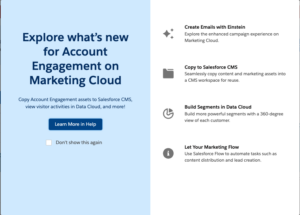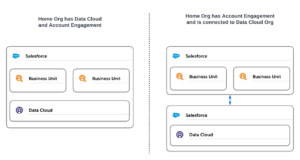Demystifying Apple’s Mail Privacy Protection
- August 14, 2021
- Email Delivery, Email Open Rates, Greenkey Digital
Apple’s new privacy protection made me sigh.
Marketers dodged a downhill-rolling boulder with Google’s announcement to stop third-party tracking, only to find another serious obstacle (Apple’s new policy) right behind it.
Apple’s Mail Privacy Protection blocks email senders from knowing if email recipients opened their email. It also masks the IP address so it can’t be linked to other online activity or used to determine location.
Apple privacy protection in iOS 15 rolls out as early as September 2021. Read the full details here.
Ultimately for marketers, the upgrade means less accuracy with email open rates.
Pardot User Group session
Watch this video to hear from Salesforce’s Director of Cybersecurity & Privacy Joel Odom about the topic.
When is Apple making their move?
Apple said to expect the iOS 15 release this fall. Based on the last nine iOS releases, marketers should expect this to launch around the same time: mid-September 2021. Once the upgrade is available, expect Apple users to take roughly a month to accept the upgrade.

Source: Litmus
What exactly will happen?
When you first open the Apple Mail app, you will get a message prompting you to either “Protect Mail activity” or “Don’t protect Mail activity.”
But this will not be the default.
You will have to actively choose. However, based on the 4% opt-in to ad tracking from Apple’s App Tracking Transparency tool and the language around the Mail Privacy Protection options, it’s highly likely we’ll see similar opt-in rates for email tracking.

How it works
Apple will first route emails through a proxy server to pre-load message content—including tracking pixels—before serving to readers (even if readers don’t open those emails). This will distort email analytics, showing as if all Apple emails have been opened. According to Litmus testing, the Apple device must be on WiFi with Mail running in the background.
This affects any email opened from the Apple Mail app on any device—no matter which email service is used, such as Gmail or a work account. On the other hand, this shouldn’t affect other email apps used on Apple devices like the Gmail app on an iPhone.
Note: Salesforce also believes Pardot’s Metrics Guard might be able to detect and filter Apple’s false email opens. Will Apple’s proxy server open all the emails at one time? Or, Apple could randomize the email opens, making them harder to detect. It’s anyone’s guess.

Source: Litmus
Should you care?
Market share data on email clients shows the Apple Mail client (iPhone, Mac, and iPad) has 49% of combined email opens as of the end of July 2021.

Source: Litmus
Understand how you are affected
According to Salesforce’s Joel Odom, Apple’s privacy upgrade will impact approximately 40% of Pardot emails.
If you have Pardot’s Advanced Email Analytics Package, review the email client report for your company’s emails. It allows you to capture and track email client usage for emails opened across your lists in Pardot. Read more here.

To see the Email Client breakdown, go to Pardot Reports > Marketing Assets > Email > List Emails
When you click on a list email, you should see the Email Clients tab.
In the image below, the pie chart on the left shows the Email Client Breakdown. Apple Phone, Apple Mail and Apple iPad will all be affected by Apple’s policy change. If you click on a “slice” of the pie, you can see more details in the pie chart on the right.

How Pardot users can prepare
So…what now?
Pardot users should do the following:
- Stop evaluating prospect engagement based on email opens.
- Because email open rates are still relevant, use the time RIGHT NOW to clean your Pardot database based on email open engagement.
- Re engineer your emails for click engagement. (For instance, I email my blog with only the first three sentences. Readers need to click to “Read More” to get the full blog text.)
- Review all automations using criteria for email opens.
- Check engagement programs that trigger from email opens.
- Audit scoring that uses email opens.
- Consider how you use A/B testing (based on open rates), and the Interaction report (shows “Read,” “Skimmed” from email opens).
- Salesforce modified the algorithm for Einstein Send Time Optimization (ESTO) to accommodate for the Apple enhancement. If you’re using Send Time Optimization, you can continue to do so.
This Pardot article written by: Jen Kazin
Greenkey Digital
Unlock the Power of Pardot. Don’t spend tens of thousands of dollars on marketing systems to simply… send emails.
Original Pardot Article: https://greenkeydigital.com/apple-privacy-protection/?utm_source=rss&utm_medium=rss&utm_campaign=apple-privacy-protection
Find more great Pardot articles at https://greenkeydigital.com/
Pardot Experts Blog
We have categorized all the different Pardot articles by topics.
Pardot Topic Categories
- Account Based Marketing (ABM) (7)
- Business Units (14)
- ChatGPT / AI (3)
- Completion Actions (5)
- Connectors (10)
- Custom Redirects (4)
- Data Cloud (3)
- Demand Generation (8)
- Dynamic Content (7)
- Einstein Features (11)
- Email Delivery (17)
- Email Open Rates (3)
- Pardot A/B Testing (2)
- Email Mailability (16)
- Do Not Email (1)
- Double Opt-in (2)
- Opt Out / Unsubscribe (14)
- Email Preferences Page (6)
- Engagement Studio (16)
- Industries (1)
- Non Profit (1)
- Landing Pages (9)
- Lead Generation (1)
- Lead Management (13)
- Lead Routing (3)
- Lead Scoring (16)
- Leads (3)
- Marketing Analytics – B2BMA (9)
- Marketing Automation (1)
- Marketing Cloud (3)
- Marketing Cloud Account Engagement (4)
- Marketing Cloud Growth (2)
- New Pardot Features (6)
- Opportunities (2)
- Optimization (2)
- Pardot Admin (65)
- Duplicates (1)
- Marketing Ops (1)
- Pardot Alerts (1)
- Pardot API (2)
- Pardot Automations (3)
- Pardot Careers (12)
- Pardot Certifications (4)
- Pardot Consulting (1)
- Pardot Cookies (4)
- Pardot Custom Objects (3)
- Pardot Email Builder (8)
- Pardot Email Templates (10)
- HML (6)
- Pardot Events (17)
- Pardot External Actions (1)
- Pardot External Activities (4)
- Pardot Forms (29)
- Form Handlers (8)
- Pardot Integrations (21)
- Data Cloud (2)
- Slack (1)
- Pardot Lead Grading (5)
- Pardot Lead Source (2)
- Pardot Lightning (1)
- Pardot Migration (1)
- Pardot Nurture / Drip Campaigns (2)
- Pardot Personalization (3)
- Pardot Profiles (1)
- Pardot Releases (18)
- Pardot Sandboxes (2)
- Pardot Segmentation (5)
- Pardot Strategy (7)
- Pardot Sync (2)
- Pardot Sync Errors (1)
- Pardot Tracker Domains (5)
- Pardot Training (3)
- Pardot Vs Other MAPs (4)
- Pardot Website Tracking (2)
- Reporting (22)
- Salesforce and Pardot (31)
- Marketing Data Sharing (2)
- Pardot Users (3)
- Salesforce Automation (5)
- Salesforce Flows (2)
- Salesforce Campaigns (22)
- Salesforce CRM (3)
- Record Types (1)
- Salesforce Engage (3)
- Salesforce Queues (2)
- Security and Privacy (1)
- Tags (3)
- The Authors (540)
- Cheshire Impact (9)
- Greenkey Digital (55)
- Invado Solutions (37)
- Jenna Molby (9)
- Marcloud Consulting (6)
- Nebula Consulting (67)
- Pardot Geeks (44)
- Salesforce Ben | The Drip (242)
- SalesLabX (16)
- Slalom (4)
- Unfettered Marketing (51)
- Uncategorized (1)
- Website Tracking (2)
- Website Search (1)
More Pardot Articles
See all posts
This Pardot article written by: Jen Kazin
Greenkey Digital
Unlock the Power of Pardot. Don’t spend tens of thousands of dollars on marketing systems to simply… send emails.
Original Pardot Article: https://greenkeydigital.com/apple-privacy-protection/?utm_source=rss&utm_medium=rss&utm_campaign=apple-privacy-protection
Find more great Pardot articles at https://greenkeydigital.com/






